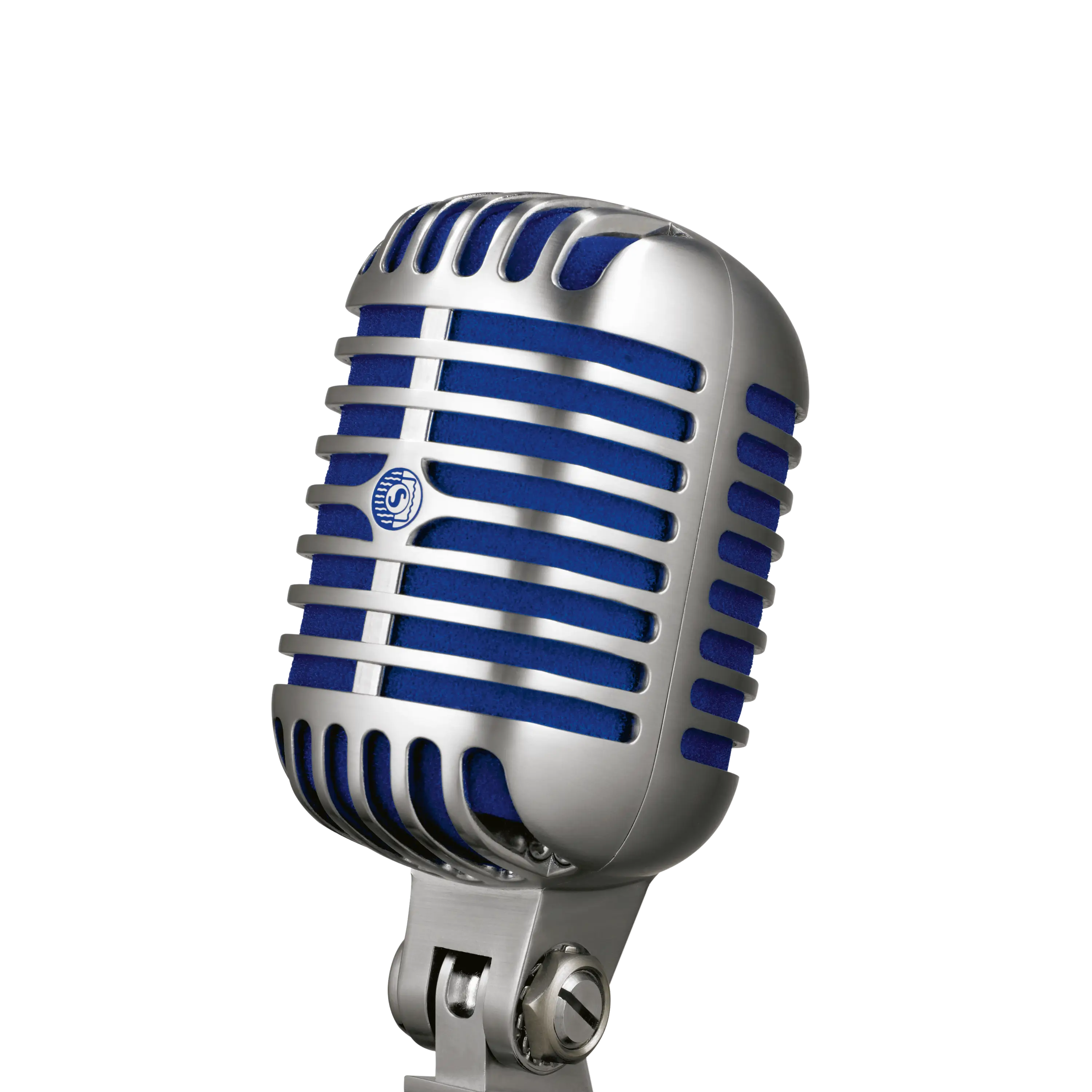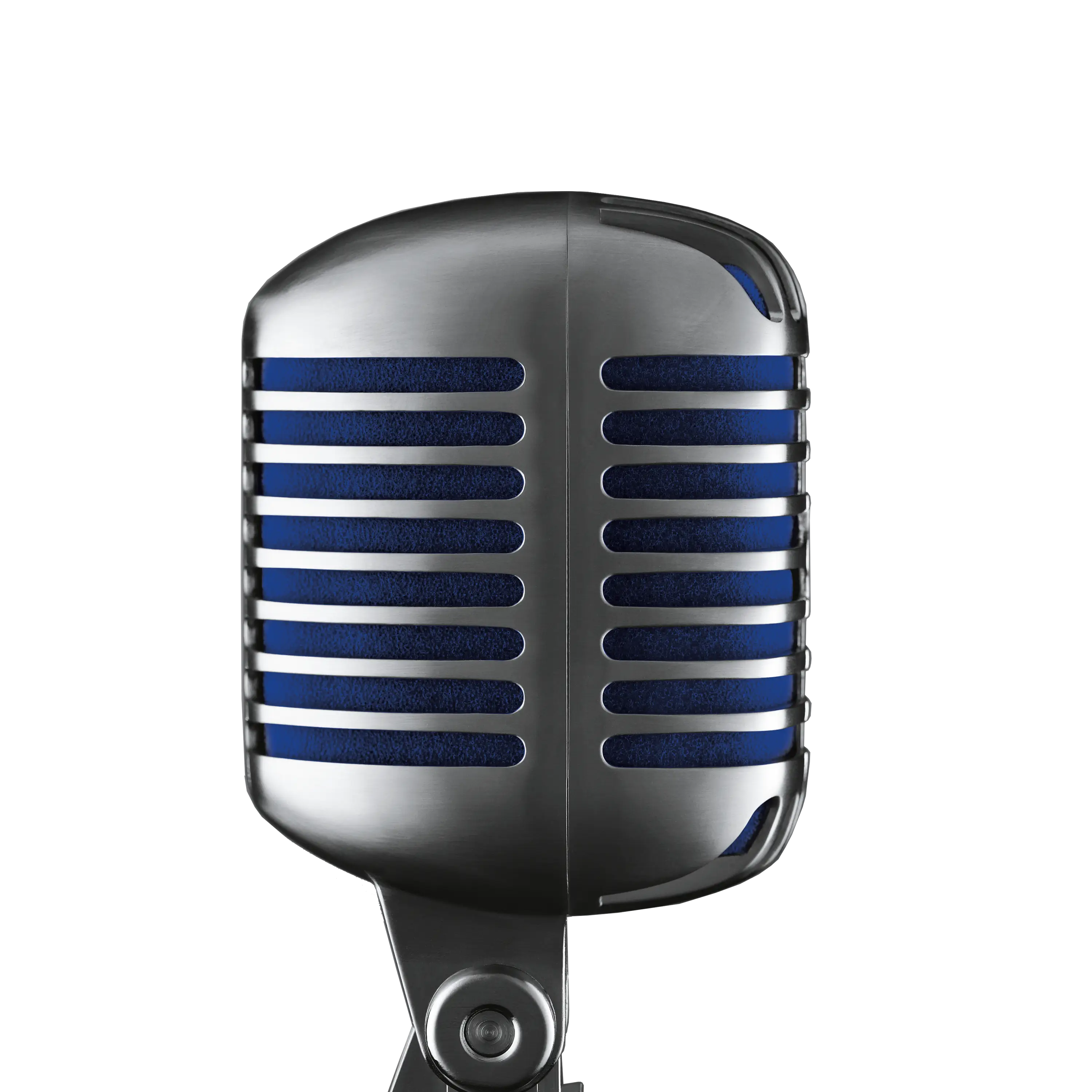How I Chose My First Live Vocal Mic

After taking just enough voice lessons to be dangerous (six, to be exact) and performing with some very patient folks here at Shure HQ, I'm starting to explore the music world that lives in nooks and crannies around Chicagoland...and lo and behold, the time has come for me to buy a live vocal mic.
Luckily, I work with a slew of people who are massively overqualified to help me with that.
Dean Giavaras and Travis Duffield of the Shure Performance / Listening Center hooked me up with eight live vocal microphones, from value-priced to high-end, dynamics and condensers, so I could experience for myself the differences between them and figure out which one I preferred. Granted, this preference is completely subjective. There isn't a right or wrong answer. Even so, I hope you'll find this journal of my experience useful if you're wondering what exactly to consider when considering a vocal mic. So, without further ado...

For the test track, I chose something that spans my chest and head voice, and that goes loud and soft, just so I could hear how each part of my range and each dynamic level sounded with each mic.
Below are a few pointers from Dean regarding the setup, which he and Travis handled:
"Something VERY important to remember with this and any comparative listening exercise: the samples MUST be at (or very near +/- .5db) the same perceived listening volume, or you will almost always prefer the louder one. The input stage of whatever you listen through will need to be adjusted to account for differences in microphone sensitivity. In this case, recording the same clip through each mic one at a time, it also meant slightly adjusting the recorded clips for playback to compensate for minor performance irregularities. Slight differences in performance can also bias your perception when making a comparison like this. To assist with consistent timing and pitch, we had Allison sing along to a prerecorded track, which she heard through headphones."
As you'll hear in the sound clips they recorded of me singing into each mic, I'm an alto who spends most of her time in chest voice. When you listen, keep in mind that the files below are compressed, so you won't hear exactly what I heard in the studio playback of the raw files on big fancy speakers.
One thing that caught me by surprise: what drove me toward the mic I chose wasn't just the way it sounded. The way it's shaped influenced me too.

The Comparison
PG58
When I moved from the PG58 to the SM58®, I noticed a difference in plosives (the sounds of P and B, for example). I tend to get all up in the mic's business, to a fault. For a singer who doesn't eat the mic, the PG58's plosives might not be so pronounced, but for me, they made the PG58 less of a contender. Additionally, when I held the two mics, I noticed that I could hear the movement of the mic in my hand a little more with the PG58 than with the SM58. That's somewhat moot in my case, however. I have a dance background, so I prefer leaving the mic in the stand so I can flail around. Plus, my hands get shaky from the adrenaline that goes with performing, so holding the mic feels awkward to me. I'll hold it if that's what's best for a particular song, but it's not my favorite flavor. If you like to hold the mic in your hand or in the stand all the time, though, then you should definitely do that when you test potential vocal mics so you can determine your comfort level with those extra little sounds.
SM58
While I'm singing, I love the SM58 for the same reason every other fan of it loves it: it sounds like me. What I hear from the mic and what I hear in my head as I'm singing sound the same. This is incredibly comforting in the moment. But when I heard the SM58 track played back, I felt differently. If your voice is weaker on the low end, then you might like the extra boost that the SM58 gives you in that range, but that's not my weak spot. I need help brightening up the top end. Dean offered two related reasons for that extra low-end boost: one, the SM58's pronounced proximity effect, as explained in the SM58 User Guide (see both the blurb about proximity effect and the frequency response diagram); and two, my aforementioned tendency to get a little too, er, proximate to the mic. Chances are, if you have better mic technique than I do and a different kind of range, my experience won't apply to you, and, like millions of singers over many decades, you'll swear by the SM58.
Still, I do like the SM58's cardioid polar pattern. It's more forgiving for wandering singers like me than a supercardioid. The genre of music I sing means the musicians who play with me aren't so loud that I absolutely need a mic with a tighter polar pattern than rejects sound sources on either side of me. But. Were I to like the way I sound on a supercardioid mic enough (spoiler alert...), then I could be persuaded to focus more and wander less. If you're playing with a loud band, though, you might want a tighter polar pattern so your mic is picking up more of you and less of all the shredding and wild drumming going on around you.
55SH
The 55SH...sigh. I wanted to love this mic because it's so beautiful, but I felt awkward in front of it. It's so big that I let myself sing all over it. Perhaps if I were more disciplined, I would have had a better experience of it. Dean explained that, in retrospect, we should've tried the Super 55, which is designed for singers, instead of the 55SH, which has a shaped frequency response better suited to speech applications. Oops.
BETA 58A
The first time I ever sang by myself in public outside of a karaoke bar, I used a BETA 58A®. It was a small café, and I was (again) eating the mic, so the sound person flew to the controls and desperately tried to lower the volume, but there was unfortunately no stopping me. My two friends in the front row confirmed: "Nice job, but maybe, er, back off the mic a little..." (D'oh.) My point: the BETA 58A is a dynamic, but it's "hotter" than other dynamics. It's also a supercardioid, so it's less forgiving for wanderers than the SM58. That said, I really liked the BETA 58A in this go-round. It wasn't as boomy on the low end as the SM58, and it gave me a little more detail on top. Plus, with a dynamic mic, you don't have to worry about phantom power, so it should work just fine with your average dive bar's ancient sound system. (Pretty sure that's going to be my default venue.) Hmm, I thought, listening to the playback. We have a contender.
SM86
People around the office always call the SM86 our sleeper mic because it sounds amazing on so many voices. Before Shure introduced the KSM9, the SM86 was a go-to live vocal mic for many of our artist endorsers. After hearing colleagues rave about it for years, I expected it to jump out at me as The One. Verdict: it sounded good, but it didn't stand out to me. Again, though, for a different type of voice and user, this mic could be the magic bullet.
BETA 87A
Next came the BETA® 87A. Like the SM86, it's a condenser microphone, so it's hotter and delivers a more detailed sound than a dynamic mic due to its extended frequency response. I thought it balanced out the low and high ends of my voice nicely, revealing the parts of the low end I like without overemphasizing them, and brightening up my upper register. After the take, I said, "Oooh. Yes." And I quote. When I looked up at Dean in the sound booth, I saw the raised eyebrows that mean Heard that. He flipped on the intercom and said, "I liked that one best so far on you too. It's funny that we thought the same thing completely independently." That validation felt good. Ultimately, I'm the one who has to be comfortable with the way I sound on the mic I choose, but it felt reassuring to have someone with an expert ear agree with me.
KSM9
The details that came out with the KSM9 and KSM9HS were really nice. I heard nuances in dynamics and tone that I've never heard before...meaning, they made me sound better than I am. Dean noted that the KSM9HS has a tighter, more focused sound than the KSM9, which is more open and natural. He also pointed out that the KSM9HS is the best in this entire lineup at rejecting other sound sources like guitars, drums, et cetera. Alas, those top-of-the-line mics have the price tag to match. If I were a fancy singer playing in bigger venues, then I'd go for it, but I'm just starting out. And honestly, as Travis explained to me much more articulately than I'm recapping here, their features would be lost on the sound systems in the kinds of venues I'll most likely be playing in (again: dive bars).
KSM9HS
Another thing that surprised me: I liked the shape of the grille on the SM86, BETA 87A, KSM9, and KSM9HS. That flat surface helped me focus on where to direct my sound. I'd never used a mic that didn't have a ball-shaped grille, and though I am more or less used to it, I've always felt a little bit lost in front of it. I end up singing all over it, which isn't the best technique. Because of the way the grille shape focuses me, I'm not concerned that the BETA 87A's supercardioid polar pattern will be too unforgiving for me. But maybe I'm wrong that I'm too wandery for supercardioids with ball-shaped grilles: the other mic I liked, the BETA 58A, has a supercardioid polar pattern... Anyway, if I ever do play with loud bands, it'll be nice to have the BETA 87A's side rejection helping me cut through the ruckus.
The Wrap-up
My biggest takeaway: every singer has to do this for himself or herself. My choice might be good for you if your range and timbre resemble mine, and if you interact with the mic the way I do. For example, if we did the same experiment with a high soprano who has a lot of nasal resonance, and who prefers to hold the mic (Cheryl Jennison DaProza, I'm looking at you), she'd most likely prefer a different mic than I do. And heck, you might listen to my tracks and completely disagree with me on which mic sounded best. There isn't a right answer here: only what feels right and sounds right to you as the singer. After all, you have to be confident in order to deliver your best performance, and if you feel confident in your gear selection, that'll go a long way.
If you're a singer in search of a microphone, go audition as many as you can! Visit a dealer or a recording engineer friend and test-drive a bunch of different mics. While you're wailing away, listen, look, touch...but don't taste. Somebody else probably already germed them all up, and really, isn't that the reason a singer needs her own mic anyway? (Or mics, because I think I'm gonna get two: the BETA 58A and the BETA 87A...)
Editor's Note: The opinions expressed in this blog post are the author's own. Sound is subjective; therefore, the author's views on the suitability of each microphone for her voice should not be applied generally to other voices.




